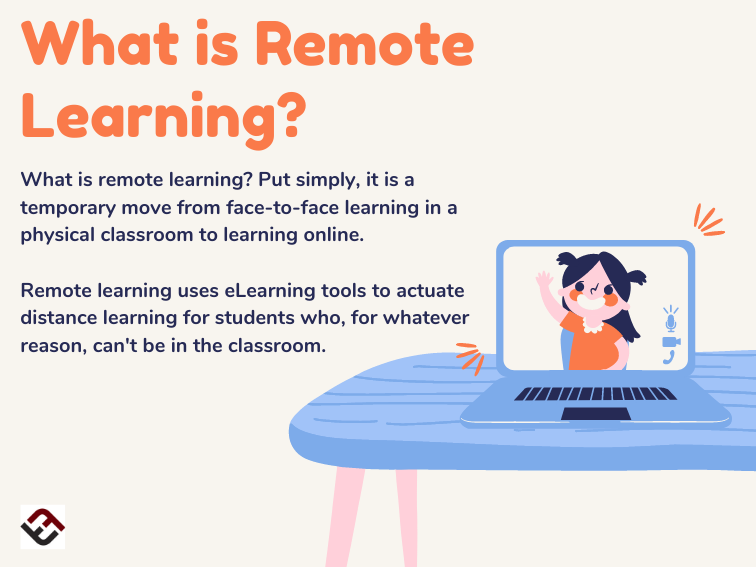
The Definition Of Remote Learning
by TeachThought Staff
What is remote learning?
Remote learning is the practice of moving a formerly in-person learning process online–usually temporarily.
While there isn’t one single definition for remote learning any more than there is a single definition for ‘learning through play,’ the big idea is generally consistent: a temporary move from face-to-face teaching in a physical classroom to a digital space accessed ‘remotely.’
For teachers, this means a reconfiguring units and lessons to work with online teaching strategies while developing new learning materials optimized for learning online.
For students, this means you’ll be using new tools to learn, more or less, the same ‘stuff.’ There are pros and cons to this, as you might have already learned.
Now, for some context.
The Definition Of Remote Learning
In The Difference Between Synchronous And Asynchronous Learning, we said that “asynchronous and synchronous learning are thought of as types of eLearning, but most physical, brick-and-mortar classrooms are technically ‘synchronous’ while a self-directed learning environment where students learned ‘independently’ of one another–especially the same content–would technically be asynchronous.”
Remote learning, then, is a kind of Synchronous Learning. While it’s clear what the word ‘remote’ means, there’s more to this to understand. Why not just call it online learning or ‘Distance Learning’? Implied in the phrase ‘Remote Learning’ is the temporary nature of it–that there was some need to take a traditional classroom and move it online.
Most recently, the COVID-19 pandemic emphasized remote teaching and learning as an effect of school closings globally. In a very short period of time, schools had to shoe-horn their existing teaching and learning process and all of its parts (i.e., curriculum, assessment, and instruction) into an eLearning space.
Of course, this is not ideal and illustrates the shortcoming. Courses developed to be used online can be created to take advantage of the benefits of online learning while adjusting for its disadvantages. Imagine how difficult–and not ideal–it would be to take an online course and almost overnight turn it into a series of in-person units, lessons, and activities. It would, of course, be clumsy and absurd.
But when a school is forced to ‘move’ the ‘class’ online for an extended period of time, compromises have to be made. Remote Teaching is actuated by teachers doing their very best to re-engineer an entire school year’s worth of work into an online space–sometimes multiple online spaces using tools they don’t always get to choose while adjusting it all to be accessible to every single person in the (now remote) classroom.
The challenges of doing this well are monumental. To do so over a long period of time–with the limited tools and resources most teachers are given–simply isn’t sustainable but that’s a topic to explore another day.
For now, let’s review the definition of remote learning by looking at what it’s not:
1. It’s not simply ‘Distance Learning’ because, while it happens at a ‘distance,’ Distance Learning is characterized by that distance while ‘remote learning’ implies ‘usually close’ teaching and learning that are now happening apart.
2. It’s also not eLearning. While it uses eLearning as a strategy (its central strategy), it is not a process designed for distance or eLearning platforms.
Put another way, Remote Learning uses eLearning tools to actuate Distance Learning for students who, for whatever reason, can’t be in the classroom.
In some cases, it may be a single student not able to access a classroom and who is forced into remote learning. This student (like the students in the examples above) may use a virtual classroom, but that usage use eLearning tools and platforms to replicate the in-classroom experience as closely as possible.
And that’s likely the best way for most people to think of Remote Learning: a temporary way for a classroom to stay together and continue learning while physically apart.
What Is Remote Learning?
